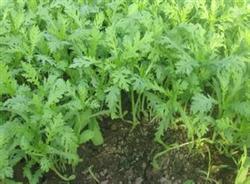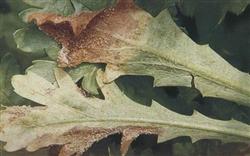Technical points of field management measures of Artemisia annua L.

The optimum temperature for the growth of Artemisia annua was 17-20 ℃. When planting in protected areas for more than 25 ℃, the vents should be opened for ventilation. When the seedlings grow to about 10 cm, the leaflet species are pulled out square by plant and row spacing of 3-5 cm, and the large leaf species are pulled out by 20 cm or so, and weeds are eradicated at the same time. After the seedlings were unearthed, the seedlings began to be watered to keep the soil moist. Quick-acting nitrogen fertilizer was applied 10-15 days before each harvest, 15 kg of potassium nitrate and 8 kg of urea per mu. Prevention and control of diseases and insect pests of Artemisia annua mainly from agricultural control hands, reasonable fertilization and watering to avoid sudden changes in temperature management, create a good ecological environment and promote the healthy growth of plants. When the seedlings grow to 18-20 cm high, the leaflet seeds are harvested once on the ground, wash the soil from the roots, and tie them into small handfuls on the market. The harvest of Artemisia annua is more flexible, it can be harvested at one time, or it can be harvested many times by sowing at one time. The method is to leave 4-5 leaves or 1-2 side branches at the base of the main stem, cut the upper young main branches or side branches with hand pinch or knife, bundle them into a handful and put them on the market every 20 days or so. Watering and topdressing in time after each harvest to promote the germination of lateral branches.
- Prev

Cultivation techniques and Management methods of Artemisia annua L.
1. Artemisia annua L. should be cultivated in sandy loam soil, which requires convenient irrigation conditions. After selecting the land, turn the soil and apply fine farm manure, applying more than 1000 kg per 0.1ha and 25 kg diammonium phosphate as base fertilizer. Make a flat bed with a width of 1.2 to 1.4 meters and a length of 10 to 20 meters, ready to sow seeds. Second, sowing and raising seedlings.
- Next

Cultivation techniques of Artemisia annua in Solar greenhouse
Planting density should be reasonable, avoid over-close planting; re-apply base fertilizer, increase organic fertilizer, control the amount of nitrogen fertilizer, prevent excessive growth; do not flood irrigation, timely drainage after heavy rain. Can you choose 58% nail cream at the initial stage of the disease? Manganese zinc wettable powder 500 times liquid, or poison alum 64% bad mold? Mn-Zn wettable powder 500 times liquid spray.
Related
- Where is it suitable to grow horseradish in China? it is expected to see the middle altitude horseradish in Alishan.
- How to prevent tomato virus disease reasonably? (Control methods included)
- Many people like to plant towel gourd on the balcony. What are the main points of this method and management?
- What crops can chili peppers be mixed with?
- Fertilization techniques and matters needing attention in Tomato
- What are the grafting techniques for peach seedlings in spring?
- Harm and control methods of root swelling disease of Chinese cabbage
- What are the pests of sweet potatoes? How to prevent and cure it?
- Symptoms, causes and Control methods of navel Rot in Tomato
- The cause of "Cucumber rotten bibcock" in Farmers' planting Cucumber and its Control Plan

